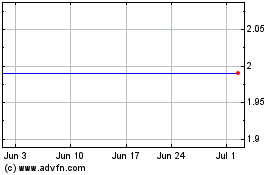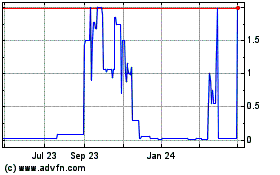UNITED STATES
SECURITIES AND EXCHANGE COMMISSION
Washington,
D.C. 20549
FORM 8-K
CURRENT REPORT
Pursuant to Section 13 OR 15(d) of
the Securities Exchange Act of 1934
Date of Report (Date of Earliest Event
Reported): December 6, 2023
| |
|
WB Burgers Asia, Inc.
|
| (Exact name of registrant as specified in its charter) |
| |
|
|
|
|
| Nevada |
|
000-56233 |
|
00-0000000 |
| (state or other jurisdiction of incorporation) |
|
(Commission File Number) |
|
(IRS Employer Identification Number) |
| |
|
|
|
3F K’s Minamiaoyama
6-6-20 Minamiaoyama, Minato-ku,
Tokyo 107-0062, Japan |
|
107-0062 |
| (address of principal executive offices) |
|
(zip code) |
| |
| 81-90-6002-4978 |
| (registrant’s telephone number, including area code) |
| |
|
N/A |
| (former
name or former mailing address, if changed since last report) |
Check the appropriate box below if the Form 8-K filing is
intended to simultaneously satisfy the filing obligation of the registrant under any of the following provisions (see General Instruction
A.2. below):
| [ ] |
Written communications pursuant to Rule 425 under the Securities Act (17 CFR 230.425) |
| [ ] |
Soliciting material pursuant to Rule 14a-12 under the Exchange Act (17 CFR 240.14a-12) |
| [ ] |
Pre-commencement communications pursuant to Rule 14d-2(b) under the Exchange Act (17 CFR 240.14d-2(b)) |
| [ ] |
Pre-commencement communications pursuant to Rule 13e-4(c) under the Exchange Act (17 CFR 240.13e-4(c)) |
Indicate by check mark
whether the registrant is an emerging growth company as defined in Rule 405 of the Securities Act of 1933 (§ 230.405 of this
chapter) or Rule 12b-2 of the Securities Exchange Act of 1934 (§240.12b-2 of this chapter).
Emerging
growth company [X]
If
an emerging growth company, indicate by check mark if the registrant has elected not to use the extended transition period for
complying with any new or revised financial accounting standards provided pursuant to Section 13(a) of the Exchange Act. [
]
“We”, “Us”, and or “The Company”
refer to WB Burgers Asia, Inc.
| |
|
| ITEM 3.03 |
MATERIAL MODIFICATION TO RIGHTS OF SECURITY HOLDERS. |
On November 3, 2023, the Board, along with White Knight
Co., Ltd. and Koichi Ishizuka, “the Consenting Stockholders”, as well as our Board of Directors, consisting solely of Koichi
Ishizuka, approved the following proposal(s):
Proposal(s):
To conduct a 100 to 1 Reverse Stock Split, effecting only the outstanding Common Shares of the Company. Accordingly, the Company will
file a Certificate of Change (the “Certificate”) pursuant to Nevada Revised Statutes (“NRS”) Section 78.209 with
the Nevada Secretary of State on December 6, 2023.
In
connection with the Reverse Stock Split detailed herein, the Company will file with the Financial Industry Regulatory Authority (FINRA)
an Over-The-Counter (OTC) Corporate Action for the Reverse Stock Split to be processed by FINRA and published on the FINRA Daily List.
Pursuant
to the proposed action, there is to be no change in the quantity of our authorized shares of Common or Preferred Stock.
Current
Status of the Above Action(s): On December 6, 2023, the Certificate of Change was filed with the Nevada Secretary of State
in accordance with the above. The FINRA Corporate Action remains pending.
Purpose
of the Reverse Stock Split
The
Company’s Board of Directors, consisting solely of Koichi Ishizuka, and our Majority Shareholders, comprised of White Knight Co.,
Ltd., which is owned and controlled by Koichi Ishizuka, as well as Koichi Ishizuka individually, believe that the Reverse Stock Split
is in the best interests of the Company and its shareholders.
It
is the belief of the Board of Directors, and the Majority Shareholders, that the Reverse Stock Split is in the best interests of the Company
primarily for the following reasons, although these are not necessarily the sole rationale behind this decision:
The
Board of Directors and Majority Shareholders believe that the Reverse Stock Split will improve the marketability and liquidity of the
Common Stock. The Company believes that the increased market price of its Common Stock, expected as a result of implementing the Reverse
Stock Split, may improve the marketability and liquidity of its Common Stock and may encourage interest and trading in its Common Stock.
The Reverse Stock Split could allow a broader range of institutions to invest in Common Stock (namely, funds that are prohibited from
buying stocks whose price is below a certain threshold), potentially increasing the liquidity of its Common Stock. Because of the trading
volatility often associated with low-priced stocks, many brokerage firms and or institutional investors have internal policies and practices
that prohibit them from investing in low-priced stocks. However, the liquidity of the Common Stock may in fact be adversely affected by
the proposed Reverse Stock Split given the reduced number of shares that would be outstanding after the Reverse Stock Split.
Risks
of the Reverse Stock Split
The
Reverse Stock Split may not have the effect that the Company anticipates, which would prevent the Company from realizing some of the
anticipated benefits of the Reverse Stock Split. The immediate effect of the Reverse Stock Split would be to reduce the number of
shares of outstanding Common Stock and to potentially increase the trading price of the Company’s Common Stock. However, the effect
of any effected Reverse Stock Split upon the market price of the Common Stock cannot be predicted, and the history of reverse stock splits
for companies in similar circumstances sometimes improves stock performance, but in many cases does not. There can be no assurance that
the trading price of the Common Stock after the Reverse Stock Split will rise in proportion to the reduction in the number of shares
of the Company’s Common Stock outstanding as a result of the Reverse Stock Split or remain at an increased level for any period.
Also, there is no assurance that the stock price would not decline below the anticipated stock price following the Reverse Stock Split.
The trading price of the Common Stock may change due to a variety of other factors, including’s operating results, other factors
related to the Company’s business and general market conditions. In addition, the fewer number of shares that will be available
to trade will possibly cause the trading market of the Common Stock to become less liquid, which could have an adverse effect on the
price of the Common Stock.
Effects
of the Reverse Stock Split
Reduction
of Shares Held by Individual Stockholders. After the Effective Split Time, each Common Stockholder will own fewer shares of the Company’s
Common Stock. However, the Reverse Stock Split will affect all of the Common Stockholders uniformly and will not affect any Common Stockholder’s
percentage ownership interests in the Company, except to the extent that the Reverse Stock Split results in any of its stockholders owning
a fractional share as described below. Any fractional share shall be rounded up to the nearest whole share.
Authorized
Shares of Common Stock. The Reverse Stock Split will not change the number of authorized shares of the Common
Stock as designated by the Articles. Therefore, because the number of issued and outstanding shares of Common Stock will decrease, the
number of shares remaining available for issuance of Common Stock would increase.
Other
Effects on Outstanding Shares. The rights and preferences of the outstanding shares of
the Common Stock will remain the same after the Reverse Stock Split. Each share of Common Stock issued pursuant to the Reverse Stock
Split would be fully paid and non-assessable.
State
Filing
The
Reverse Stock Split has been effected by the Company filing a Certificate of Change (the “Certificate”) pursuant to
Nevada Revised Statutes (“NRS”) Section 78.209 with the Nevada Secretary of State on December 6,
2023.
In
connection with the Reverse Stock Split detailed herein, the Company will file with the Financial Industry Regulatory Authority
(FINRA) an Over-The-Counter (OTC) Corporate Action for the Reverse Stock Split to be processed by FINRA and published on the FINRA
Daily List. As a result of the Reverse Stock Split we anticipate that our ticker symbol may change for a temporary period of time,
with the addition of a “D”. In connection with our Reverse Stock Split we will receive a new CUSIP number. At this time
the FINRA Corporate Action remains pending.
We
anticipate that we will file an 8-K with the Securities and Exchange Commission after completion of our FINRA Corporate Action that may
include, amongst other details, our new CUSIP number for our Common Stock and other pertinent information.
The
legal date of the Certificate of Change that we have filed with the Nevada Secretary of State on December 6, 2023, in connection
with our Reverse Stock Split, will not be the same exact date as the FINRA effective date of our Reverse Stock Split.
| |
|
| ITEM 5.03 |
AMENDMENTS TO ARTICLES OF INCORPORATION OR BYLAWS; CHANGE IN FISCAL YEAR. |
The
information set forth in Item 3.03 of this Current Report on Form 8-K is hereby incorporated by reference into this Item 5.03. A copy
of the Certificate of Change is filed as Exhibit 3.1 to this Current Report on Form 8-K.
Item 9.01 Financial Statements and Exhibits.
(d) Exhibits
| Exhibit No. |
Description |
| 3.1 |
Certificate
of Change |
SIGNATURES
Pursuant to the requirements of the
Securities Exchange Act of 1934, as amended, the registrant has duly caused this Current Report to be signed on its behalf by the
undersigned hereunto duly authorized.
| |
|
| |
WB Burgers Asia, Inc. |
| |
|
| |
|
| Dated:
December 7, 2023 |
/s/
Koichi Ishizuka |
| |
Koichi Ishizuka
Chief Executive Officer, Director |
| |
|

WB Burgers Asia (CE) (USOTC:WBBA)
Historical Stock Chart
From Mar 2024 to Apr 2024

WB Burgers Asia (CE) (USOTC:WBBA)
Historical Stock Chart
From Apr 2023 to Apr 2024
